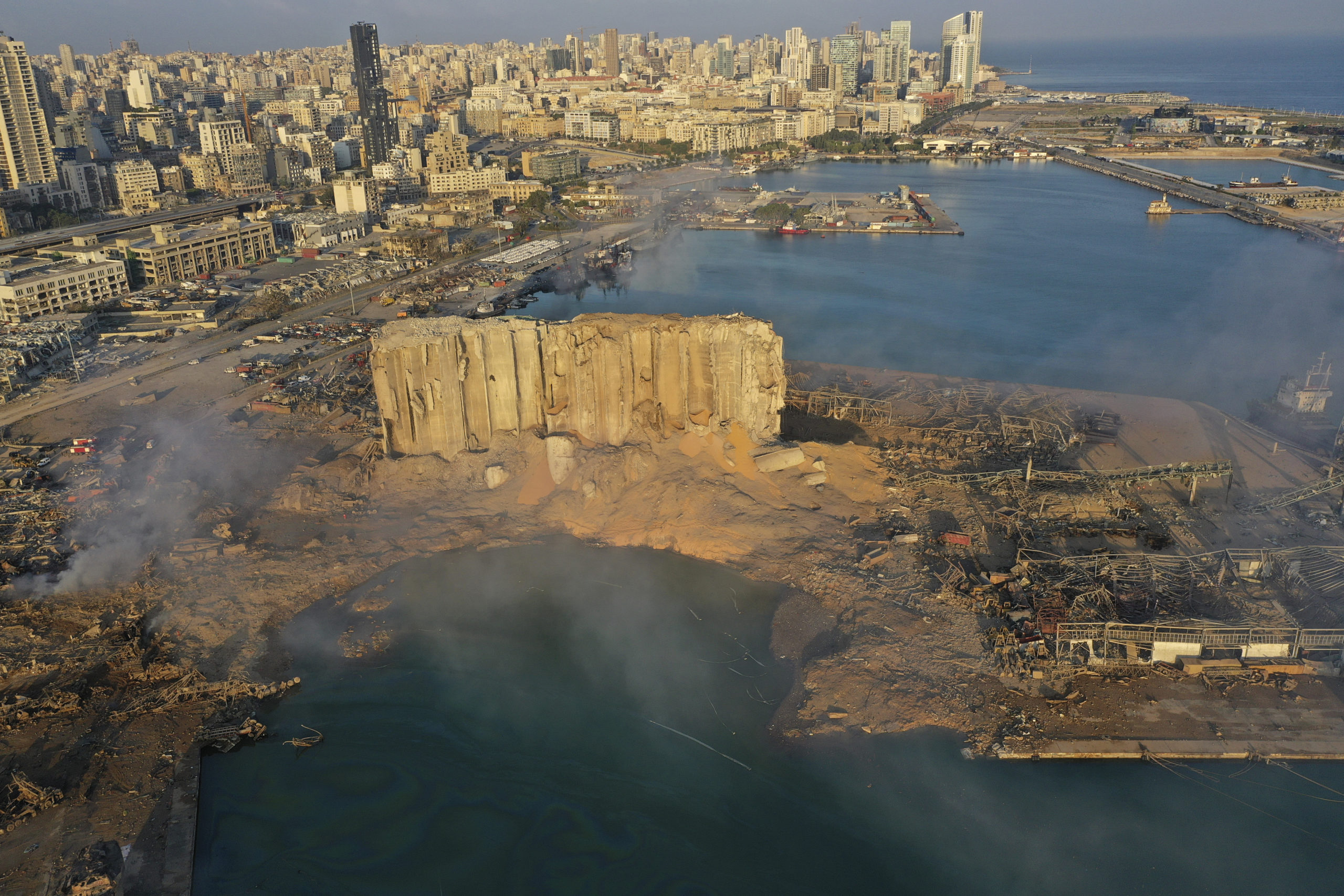Beirut port blast crater 43 meters deep — security official

A drone picture shows the scene of an explosion that hit the seaport of Beirut, Lebanon, Wednesday, Aug. 5, 2020. A massive explosion rocked Beirut on Tuesday, flattening much of the city’s port, damaging buildings across the capital, and sending a giant mushroom cloud into the sky. (AP Photo/Hussein Malla)
BEIRUT, Lebanon — The huge chemical explosion that hit Beirut’s port, devastating large parts of the Lebanese capital and claiming over 150 lives, left a 43-meter (141 foot) deep crater, a security official said Sunday.
The blast Tuesday, which was felt across the county and as far as the island of Cyprus, was recorded by the sensors of the American Institute of Geophysics (USGS) as having the power of a magnitude 3.3 earthquake.
It was triggered by a fire in a port warehouse, where a huge shipment of hazardous ammonium nitrate, a chemical that can be used as a fertilizer or as an explosive, had languished for years, according to authorities.
The huge blast also wounded at least 6,000 people and displaced more than 300,000 from their destroyed or damaged homes.
The revelation that the chemicals had languished for years like a ticking time-bomb in the heart of the capital has served as shocking proof to many Lebanese of the rot at the core of the state apparatus.
Article continues after this advertisementDemonstrators on Sunday called for renewed anti-government rallies after a night of angry protests saw them storm several ministries before they were expelled by the army.
Article continues after this advertisementIt was a new tactic for a protest movement that emerged last October to demand the removal of a political class long accused of being inept and corrupt.
“The explosion in the port left a crater 43 meters deep,” the Lebanese security official told AFP, citing assessments by French experts working in the disaster area.
The crater is much larger than the one left by the enormous blast in 2005 that killed former prime minister Rafic Hariri, which measured 10 meters across and 2 meters deep, according to an international tribunal investigating his murder.
French rescue and police teams are among a much larger group of international emergency response specialists that have flooded into Lebanon to ease pressure on local authorities unable to cope with the disaster relief on their own.
Qatari, Russian, and German rescuers are also working at the port blast site.